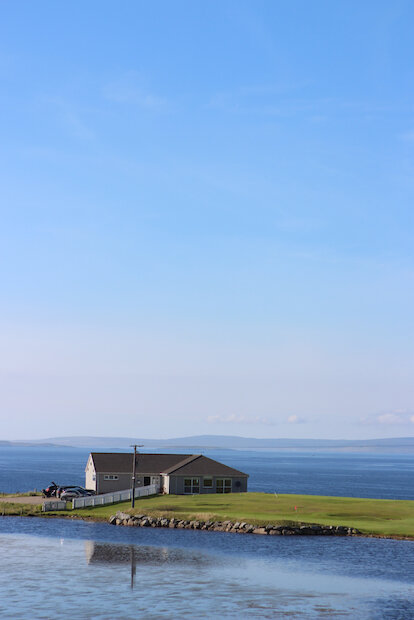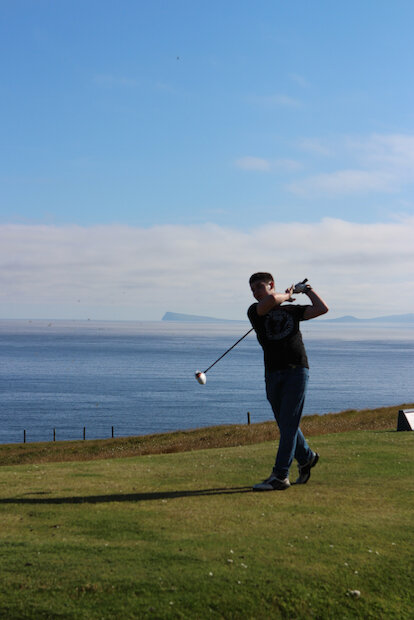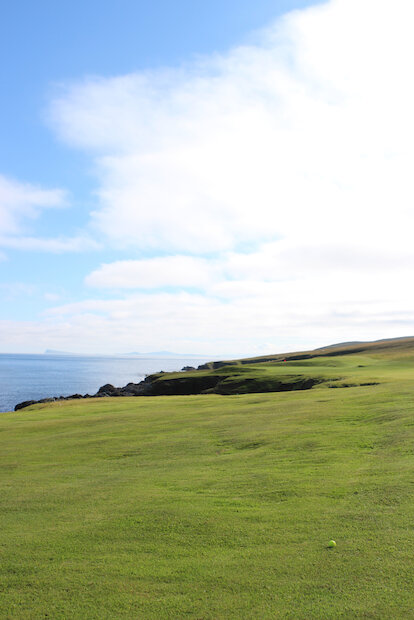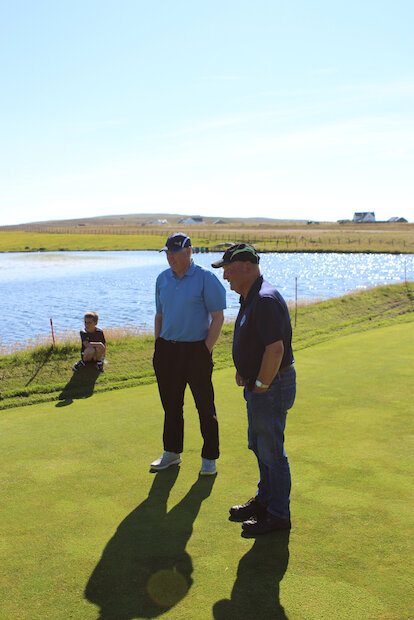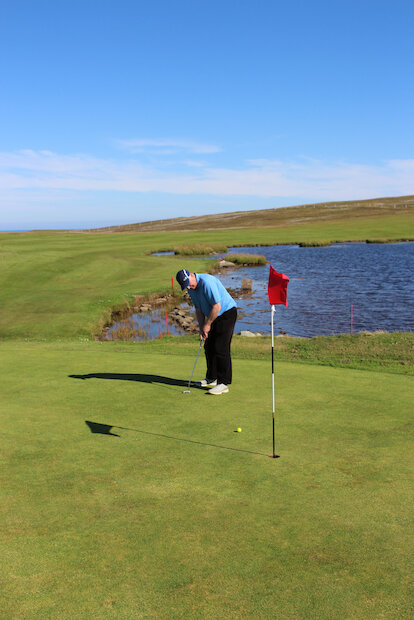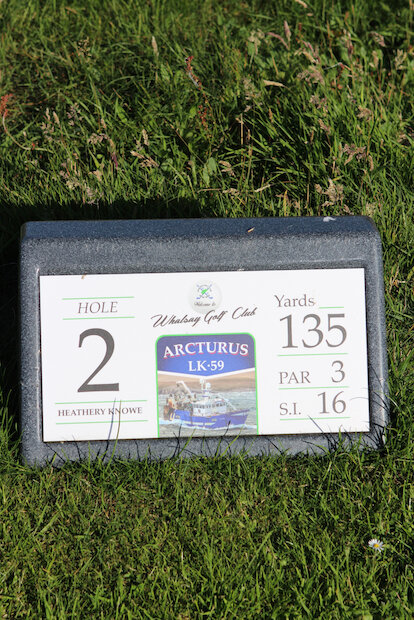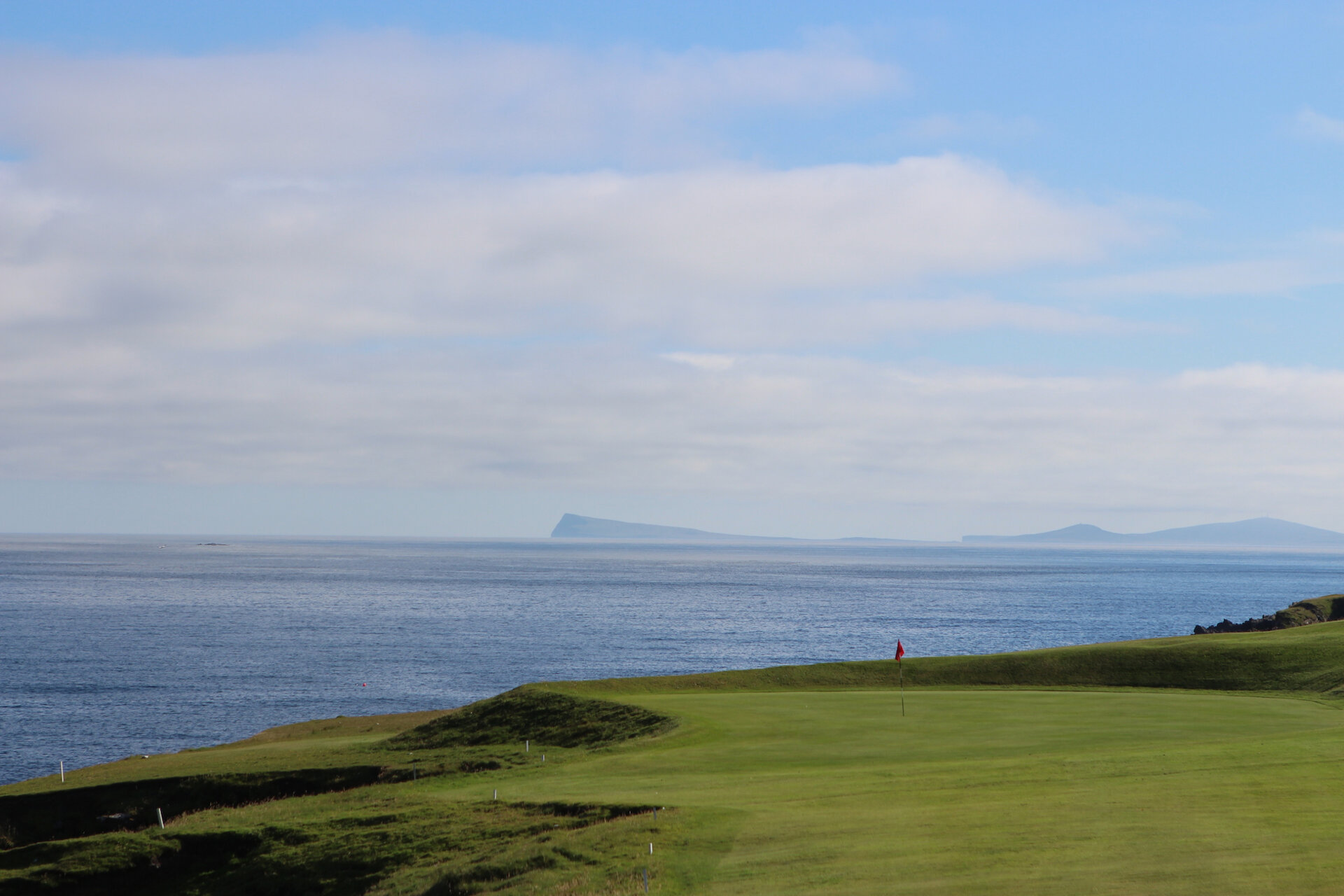Arctic terns, or tirricks in the local dialect, are chirruping and swooping overhead. It’s a blue-sky August day, and the craggy south coast of Whalsay lies before me, with views across the water to the Shetland Mainland in the distance. But my immediate concern is more pressing: the second shot to the 16th at the Whalsay Golf Club, Britain’s northernmost course. I’ve been visualising this locally famous shot – a seven iron across a precipitous gap in the cliffs – and imagining a certain glory, even if I’m alone out here with a set of borrowed clubs.
After a slightly over-indulgent prep, including a few too many practice swings and a PGA-style shake of the arms, I take my shot. But any delusions evaporate as the ball skites horribly off the toe of my club and clanks off one side of the cliff then the other like a pinball, eventually settling in a nook near the water. The shot is an insult to its surroundings. A tern stops nearby and seems to regard the ball with what appears to be bemusement. His friends swooping overhead sound like they’re laughing.
Back at the 18th green, I meet Graeme Sandison and Magnus (Magnie) Jamieson, two of the longest-standing members of this community-run club that was created in 1976. They’ve had no such problems, recording scores in the 80s, even if Graeme hasn’t quite matched his course record of a four-under-par 67, recorded one magical day in 2006. As we settle in for a post-round cider at the clubhouse, I ask for tips from Graeme, a founding member who has now won club opens here in six different decades.
“Play it safe,” he says, in a Whalsay accent that is only marginally less thick than Magnie’s (Whalsay is known for having the least comprehensible of the Shetland dialects). “A lot of people come here and try to play the perfect shots. They underestimate it, but it’s actually a pretty difficult course. People who have an eight or nine handicap on the Mainland will have 10 or 12 here, because it’s peaty ground with not much run on the ball and plays long. But it tends to be that the good players like it best.”
